The 11th of July was world population day and at current figures there are over 7.4 billion of us living on the planet. That number continues to grow and at the same time the proportion of people living in urban environments is also increasing. This week we're asking if there's space for animals in our concrete jungles and what we can do to persuade people to put nature first. Plus, in the news we learn how new technology is speeding up vaccination production and how ancient bacteria could increase plant growth.
In this episode

00:56 - Nanoparticles speed up vaccines
Nanoparticles speed up vaccines
with Dr. Omar F. Khan, Massachusetts Institute of Technology
A breakthrough in vaccination technology, which could speed up the production of vaccines for outbreaks like Ebola, Zika or the Flu, has been announced this week. Traditionally, vaccines are made by growing the infectious disease in culture and then deactivating and purifying it, and this takes time. But now Omar F. Khan has invented a nanoparticle that can deliver into the body small pieces of genetic information, in a form called RNA, that encode for parts of the disease-causing microbe. This enables the body to read those instructions and rapidly churn out both protective antibodies and infection-fighting white blood cells as he explained to Chris Smith.
of vaccines for outbreaks like Ebola, Zika or the Flu, has been announced this week. Traditionally, vaccines are made by growing the infectious disease in culture and then deactivating and purifying it, and this takes time. But now Omar F. Khan has invented a nanoparticle that can deliver into the body small pieces of genetic information, in a form called RNA, that encode for parts of the disease-causing microbe. This enables the body to read those instructions and rapidly churn out both protective antibodies and infection-fighting white blood cells as he explained to Chris Smith.
Omar - We decided to turn the patient's cells into the vaccine production factory. The way we do that is that we use nucleic acid or RNA - ribose nucleic acid. That is genetic information. These are instruction sets that your cells can read and follow. So, we can tell the cells to produce the vaccine itself and in that way, we can train the immune system to immunise itself to fight off whatever disease we programme in.
Chris - What you're describing sounds very like what we call a DNA vaccine. The rationale there is you inject the genetic message corresponding to the thing that you want the immune system to make and learn to recognise and cells decode the DNA, and make that thing. But you're not using DNA. You're using its relative RNA which is, it's like DNA but single stranded. It's the intermediate that the cells use when they turn DNA into a recipe that they're going to make. Why have you gone down that route of using RNA?
Omar - DNA had some inherent difficulties to it. The first one is that when you try to deliver DNA instruction sets, you need to get it inside the cell nucleus. That's where you can activate and use and read the DNA instruction set. The other problem is that DNA is inherently dangerous. There is a chance that the DNA that you put inside a body can actually integrate into your normal DNA and these kind of random integrations can cause cancer.
Chris - And RNA can't do that.
Omar - RNA will never do that so it's so much safer. The way this is done is first of all, my colleague can make these instruction sets that we can programme for any disease we'd like. The novel bit of this technology is actually the nanotechnology delivery system. So what I've done is that I've made a special molecule. It's a nano material. This nano material is able to take those instruction sets and package them into nanoparticles. Those can just be injected into the muscle cells of the patient and in doing so, we're able to achieve complete protective immunity for whatever disease we programme in.
Chris - Can you package more than one instruction set? So, if I wanted to do multiple vaccinations against multiple things at once, could I make a nanoparticle that's got in it these RNA instructions for a range of different entities so I just do one injection once?
Omar - Absolutely. In this nano material, I have designed in an enormous payload capacity which means I can put in multiple instruction sets, each encoding a unique disease if we'd like or multiple targets for a single disease. So, multiple instruction sets can easily fit into this particular nano material.
Chris - What's the evidence though that this works? Does it really work if you give this to an animal?
Omar - Actually, yes. It works extremely well. So using the system, we've made vaccines against a wide variety of diseases including Ebola virus and H1N1 influenza, and toxoplasma gondii which is a microorganism parasite. So what we've done is we've actually vaccinated healthy animals with these nanoparticle vaccines. Then we gave them lethal exposures to all of these pathogens. And all of these animals have survived with a single injection. So that's tremendous results. First of all, single injection means you never have to go back to the hospital for second booster shots. Some vaccines need that. The fact that all these animals survived and are healthy despite being exposed to lethal exposures to deadly pathogens, that is proof positive that this works.
Chris - There's no danger that the nanoparticles will trigger an immune response in the animal against the particle so that the vaccine might work once but if you came back and tried to do it again, the immune system would gobble it up and destroy it before it had the chance to drive any immunity.
Omar - No. We don't have a problem with that because of two major points. First of all is that the system is so efficient that we need so little to vaccinate a patient that that should not elicit an immune response. It's also designed to actually be very tolerable to the body.
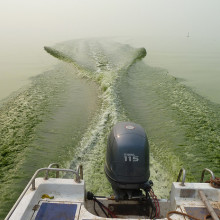
06:07 - Ancient bacteria improve photosynthesis
Ancient bacteria improve photosynthesis
with Professor Donald Bryant, Pennsylvania State University
Photosynthesis is the process by which plants and some bacteria use water, carbon dioxide and the energy in sunlight to produce sugars to feed themselves, giving off oxygen as a by-product. In plants this process takes place in structures in the leaves called chloroplasts, which contain the green-coloured substance chlorophyll. But the chlorophyll plants make can capture only a certain part of the light spectrum, meaning some light is wasted. Certain ancient microbes though - called cyanobacteria - have a different form of chlorophyll that can collect this light and putting it into modern plants might make them grow much more efficiently. Connie Orbach spoke to Penn State University's Donald Bryant to hear how...
Donald - Cyanobacteria are a group of photosynthetic bacteria that make oxygen from water like higher plants. They are the organisms which gave rise to chloroplasts in higher plants and they continue today to be the most successful of all photosynthetic bacteria. Some cyanobacteria have the capacity to grow in far red light. Those are longer wavelengths, lower energy than we can see with our eyes, and use that light energy also to drive water oxidation and oxygen evolution. So, they're capable of doing something that plants can't do presently and do it in such a way that it's beneficial to them.
Connie - So, plants only use the visible spectrum. Is that right?
Donald - Yes, that's generally correct. They use blue light to red light, the visible spectrum, and presently, plants very inefficiently use any wavelengths longer or shorter than those. So, one of the goals of plant molecular biology is to increase light utilisation. One way to accomplish that would be to introduce the capacity to use far red light into plants.
Connie - So, how do the cyanobacteria use this different part of the light? Well, they use a special type of chlorophyll, the molecule that traps and absorbs sunlight. This is known as chlorophyll F and it can absorb far red light. But what Donald and his team have now discovered and what takes us one step further in actually using this amazing property is the enzyme required to make it, chlorophyll F synthase.
Donald - We identified candidate genes by making mutations in the cyanobacteria that can perform this far red light photosynthesis with the expectation that if we found the correct gene, they would not synthesis chlorophyll F and they would be unable to grow in far red light. We identified in two separate organisms genes that had those properties, taking that gene then and expressing it in a cyanobacterium which normally cannot grow in far red light, allowed that organism to synthesise chlorophyll F, confirming unequivocally that the gene that we had identified as responsible for making chlorophyll F synthase.
Connie - So, something just as simple as this one gene will confer into another plant the ability to create chlorophyll F.
Donald - It is a simple single gene product and that's one of the beauties of this is that it should be relatively simple to produce chlorophyll F in plants. Whether or not those plants will be able to productively use the chlorophyll F that is made is something that will have to be studied and perhaps adjusted. But nevertheless, making the chlorophyll should not be all that difficult.
Connie - And if you could get this gene working in higher plants to a point that they could use it and they could then use the far red light, what sorts of difference is this going to make in terms of us growing plants globally? How much difference can it really make?
Donald - That's an excellent question. The amount of light that's available between 700 and 800 nanometres, the region that is covered by the absorption of chlorophyll F, accounts for about 25 per cent of the visible light. So in principle, it would add about 25 per cent more light available to the plant for growth. So, I would say that potential is substantial.
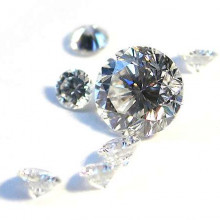
10:24 - Myth: Can diamonds be made from coal?
Myth: Can diamonds be made from coal?
with Dr Kat Arney, The Naked Scientists
Kat's been feeling the pressure with this week's Mythconception...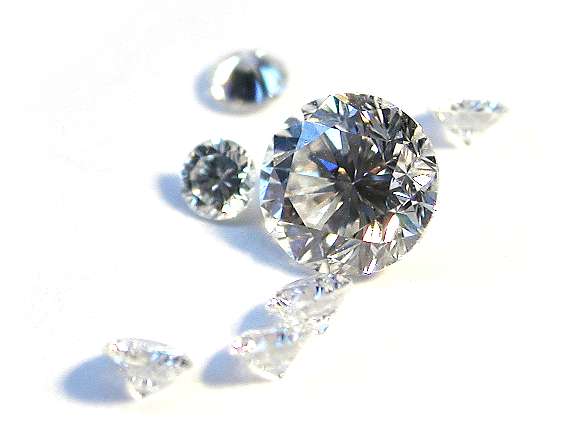
Kat - In the film Superman III, the so-called Man of Steel becomes a man of coal, crushing a lump of the black stuff in his fist to create a huge, glittering diamond. It's a neat party trick, and helped to reinforce the idea that coal - which is basically carbon - can be converted into diamonds, which are also made of carbon, by applying enough pressure. But, just like the man with his pants over his tights, the idea that diamonds are made from coal is fictional. So what's the true origin story for these sparkling gems?
According to geological studies, natural diamonds were formed over a billion years ago, created from the forces of extreme pressure and temperature deep underground in the early earth to convert carbon-rich minerals into bright diamonds. And we're talking serious stress here - the kind of pressure that's found up to 150 kilometres down in the earth, and temperatures of more than a thousand degrees Celsius stoked by molten magma in extra-deep volcanoes. These volcanoes then erupted up towards the surface of the earth, pushing up magma that formed types of rocks known as lamproites and kimberlites - named after the South African diamond-rich region of Kimberly - along with any diamonds that came along for the ride. It's these rocks that are mined for diamonds in places such as central and South Africa and shipped around the world as tokens of love, although sadly in some cases also fuelling arms trading and bloody conflicts with the profits.
Diamonds can also form in the so-called subduction zones, where one plate of the earth's crust containing a seafloor slips under another. Based on chemical analysis of diamonds formed in this way, carbon-rich rocks in the seabed are thought to get crushed and transformed into gems, rather than coal. There are a couple more ways to make diamonds too - neither of which involve coal. One is at the sites of high-impact asteroid strikes, which would generate the extreme temperatures and pressures required, and the other is through similar impacts happening in space, with the resulting tiny diamonds falling to earth embedded within meteorites.
By contrast, plants, which give rise to coal as they fossilise, weren't even around until about 450 million years ago and coal didn't even start forming on earth until three to four hundred million years ago - a few hundred million years too late for diamond formation. The oldest land plants are younger than any natural diamond, so the timing doesn't work out for a start. And coal isn't ever found as deep down as the places where diamonds are believed to form.
Then there's the chemistry. Diamond is a crystalline form of pure carbon, neatly arranged with each carbon atom strongly bonded to four other carbon atoms, while coal is a much more random, higgledy-piggledy assembly of atoms, along with a whole bunch of impurities. But there's another form of carbon that can be converted to diamond under the right conditions, and that's graphite, which is made of thin sheets of carbon atoms joined together in hexagonal rings. By applying extremely high pressure and high temperature - known as HPHT - it's possible to convert graphite into diamond, although it's a tricky method that isn't used much any more. Or, if you prefer a showier way, you can just use high explosives to blow up some graphite, although you'll only get teeny tiny diamonds out of it.
But if you do fancy playing Superman, there is a reliable way of creating diamonds from carbon, even if you lack his super-strength (but have some super lab equipment). CVD, or chemical vapour deposition, is a technique that creates diamonds by adding vaporised pure carbon atoms one by one onto a tiny diamond seed. So the most romantic use for a lump of coal is to put on an open fire, creating a beautiful backdrop to handing over a diamond ring.
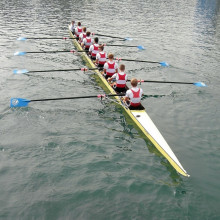
Brain over brawn
with Steve Trapmore, Cambridge University Boat Club, Claire Rossato, Anglia Ruskin University
Brain oIt's another super summer of sports and with the olympics just around the 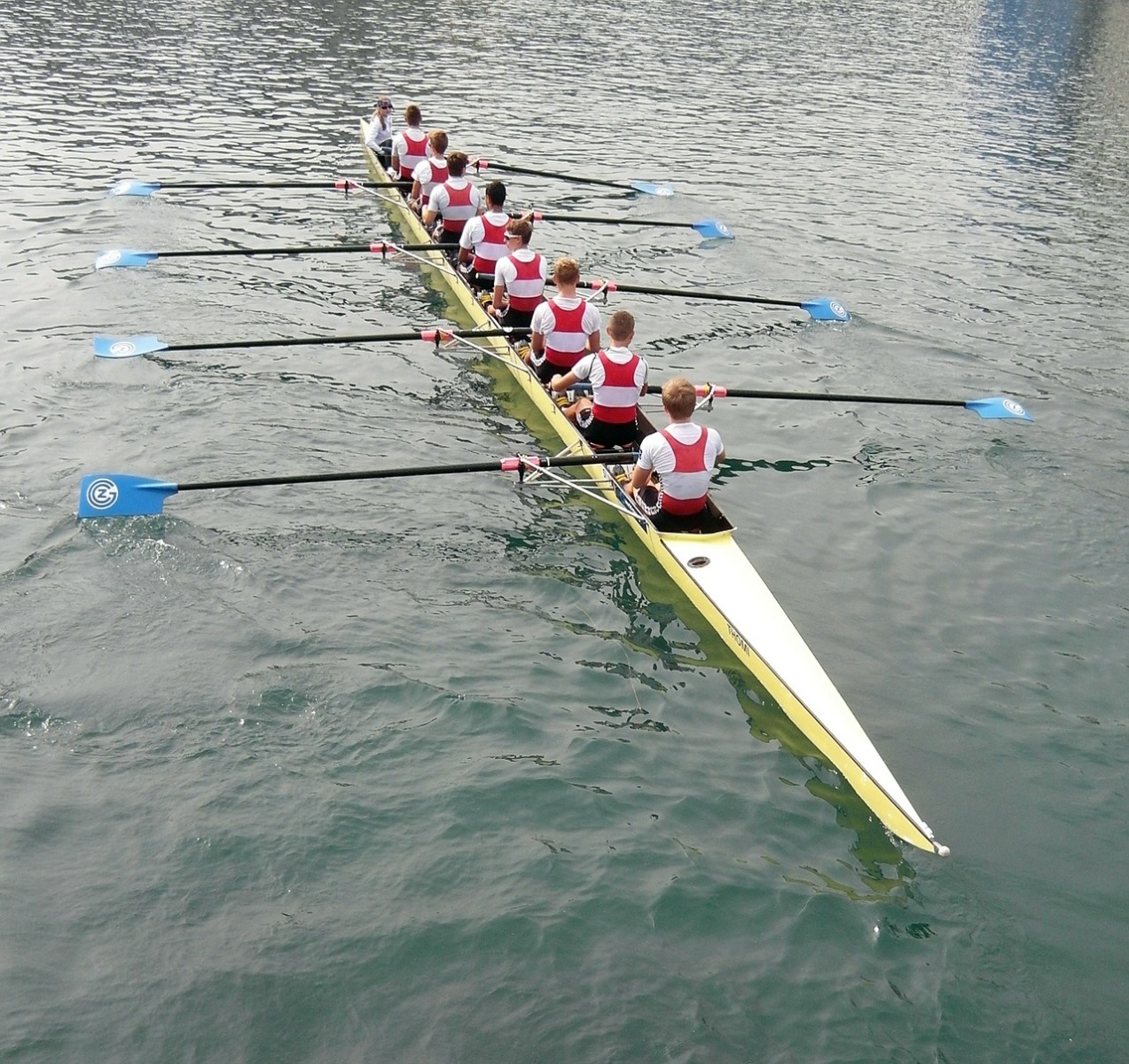 corner, we wanted to know just what it is that makes the difference between winning and losing. Connie Orbach tracked down one of Cambridge's local sports stars to find out...
corner, we wanted to know just what it is that makes the difference between winning and losing. Connie Orbach tracked down one of Cambridge's local sports stars to find out...
Steve - It's the captain's room.
Connie - Wow!
Steve - And it's got on the walls the crew list for every single boat race crew since the very first one over there in the corner which is 1829.
Connie - You're going to run out of space.
Steve - My name is Steve Trapmore. I'm the Chief Coach of the Cambridge University Boat Club. Before that, I was in the National Rowing Team for 7 years, I went to 5 world championships and one Olympic games, and won a gold medal in the 8 in Sydney in 2000. So, it's kind of the heart and soul of the club in here. It's testament to history and I guess the rivalry of the competition that's the boat race and all you see on the walls is the date and crew list, and whether they won or lost. It doesn't matter about the distance, whether it's the third or a mile. It doesn't matter. All we care about is winning.
Connie - Elite sports like the Olympics, the World Cup, or even non-professional Oxford Cambridge Boat Race are - let's face it - another world where in the end, all that's important is the win. So when it comes down to securing that ultimate aim, how much of it is in the mind? Sports psychologist Claire Rossato...
Claire - I think that when you get to professional level, the difference between winning a medal and not, could be contributed the psychological elements and their psychological preparation for that competition which they have been I guess, building up to for the last 4 years since the last Olympic games in 2012.
Connie - And so, what's going on? What's happening between the brain and the body that's meaning that it can have such a big impact on something which seems so purely physical?
Claire - We could both have very similar physiological responses to stress but it's how we perceive those that could make the difference between winning and losing. So, we kind of go with the notion that if you think you have enough resources to cope with the demands of a specific competition and you're perceiving it as a challenge, you're more likely to experience positive emotions and that has an impact upon your performance in a positive way. Whereas if you perceive it as a threat, you start to think, "You know, I'm feeling quite anxious. Actually, this is a bad thing..." then you can start over focusing on your performance. You can have skill breakdown which happens quite a lot in elite sports where athletes are placed in really highly pressurised scenarios. They start to focus on their actual movements and that can cause disruption.
Connie - What's the kind of physiological mechanism that's going on?
Claire - Recent research suggests that cardiac output increases. So, it's the amount of blood flowing around your body in one minute and with challenges in association with the decrease in TPR. That basically is constriction or dilation of the arterial walls. So really, we associate challenge with that state and more of an adrenalin response. Whereas threat, we see more of a cortisol response, so quite an increase in a stress hormone which is something that I've looked at in my research. We found that in a threat state, physiologically, there's not really much change in cardiac output. It's either sustained or actually, decreases a bit. But there's an increase in total peripheral resistance so therefore, the arterial wall starts to constrict. Blood isn't easily flowing around the body compared to in a challenge state.
Connie - So, in a challenge state, you're actually getting increased blood flow which I guess is then going to your muscles, also back to your brain re-oxygenating.
Claire - High glucose utilisation and that can help impact on decision making as well. An example is golfer Rory Mcllroy. He found it really difficult to putt on a really easy ball from 19 feet and that was in a major competition. I think that's a really good example of where a really high level athlete can actually breakdown because of pressure and not dealing with that pressure in a very good way.
Connie - So this is really high class athletes doing really quite simple mistakes.
Claire - That's correct, yeah. And I'm sure you know some of these things will happen again during the Olympics in Rio.
Connie - Okay, so bottling it at the last minute would definitely put a dent in your game. Does that mean coaches like Steve train their team's brains as well as their brawn?
Steve - I think every single training session you look at adds an opportunity to develop psychology in some aspect. It might be through discipline and focus and consistency, or it might be through toughness and pure grit. So, it's something that we developed actually through training as well as off the water or in the classroom that they will win.
Connie - What are the goals that you are aiming within them? You just said grit and resilience. What do you mean by that?
Steve - We're talking specifically about the boat race here and it's a hugely mental battle. A lot of the delivery comes down to belief and belief in not only what you're about to do, what you are doing, but what you have done to get you into the race. We keep pushing and keep pushing, and keep developing all of the areas that come together and culminates at the pinnacle on race dates. So, we do a lot of work on how to handle the pressure, how to handle people shouting at you, how to handle encouragement, how to handle people shouting derogatory things at you. All of that stuff goes in to how we build the guys up and the team up, to make sure that there's a real good robustness and confidence when they go out and perform.
Connie - You've mentioned how you're really building in this psychological training within everything you do, but you also do things in the classroom. Has that changed because you must have around a 20-year career in rowing?
Steve - Yes, it has very much. I think if I looked back to when I first came here, I came into a programme after winning year and I took the bull by the horns and moved on with the experience that the previous coaches have built up. I think that was fine at that time, but we've been up against some really, really tough opposition from Oxford. I think this year more than ever, I've drawn my own experience as an athlete because we won the Olympics in Sydney in 2000 and that was 88 years since the previous brief win. I used that experience that I went through as an athlete to help the athletes here understand that just because something seems insurmountable, it is possible. And we started right from day one with a really, "go after it! go get it!" mentality and pushing each other to the limit to find where those limits are. I think one of the things that people or certainly coaches can do too easily is put a limit on what is possible. I think one of the things that I've learned a lot over the period of being at Cambridge actually, is the athletes always surprise you - how far they can go, how hard they can go, how well they can go.
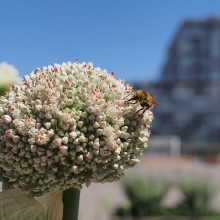
22:15 - Are we building over biodiversity?
Are we building over biodiversity?
with Dr Mark Goddard, Newcastle University
As our cities sprawl and real jungle makes way for the concrete kind, is there any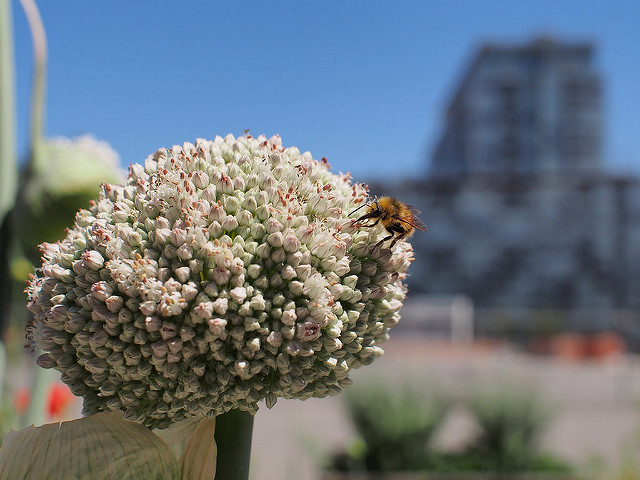 place for nature? Mark Goddard is an ecologist from the University of Newcastle and he explained to Kat Arney why there's still hope for wild cities...
place for nature? Mark Goddard is an ecologist from the University of Newcastle and he explained to Kat Arney why there's still hope for wild cities...
Mark - Well, it's a very important question. Basically, we understand biodiversity as the range of living things that are on the planet. It's often expressed as the number of species or what we call the richness of species that live within a certain place. It can even be a garden, it can be a city, or it can be a whole country for example.
Kat - When we think about the biodiversity in say, cities, big towns, small towns, villages, and then countryside areas, what do we see changing between cities and urban areas in terms of biodiversity compared to more rural and countryside areas?
Mark - Well typically, what happens is as we move along a gradient from a rural area to a city centre, more often than not, we see a decrease in the biodiversity especially when you move into a city centre, very dense urban area, everything is covered with concrete, there's no habitat for plants or animals. So we do see a significant decrease in biodiversity at this intense urbanization.
Kat - Is that across the board so we've got fewer different species of plants, fewer different species of insects, fewer different species of mammals?
Mark - Most different taxa will follow the same trend. But there's an important piece of work that I was involved in a couple of years ago. Actually, what we did, we looked at about a hundred cities across the world and we compiled the list of species which were found in those cities. It was quite surprising. There were 54 cities that we studied for birds and what we found was that actually, there was over 2,000 birds recorded living in 54 cities which is actually about 20 per cent of all known bird species so a striking amount. At the same time, there was over 15,000 plant species and that represents about 5 per cent of the total amount of plant diversity on the planet. So, it does seem that towns and cities can support important biodiversity.
Kat - Are there really kind of counterintuitive examples where maybe being an urban environment might actually be better for some types of wildlife?
Mark - Good question. So, another study that I was involved with recently called the Urban Pollinators project - involved looking at insect pollinators within 12 towns and cities across the UK and comparing the amount of different pollinator species within the town or the city, compared to nearby farmland and nature reserve. What we actually found was that although there were no significant differences between the numbers of pollinators overall, when we just looked at the bees on their own, we actually found there were more species of bees in the cities compared to farmlands. So, it seems that certainly for bees, cities can actually be very, very important habitats.
Kat - I live in London. I've lived in various parts of London. I've lived over in east London, right next to a nature reserve and had a sparrow hawk come down in my back garden one day - that was exciting. I've also lived in places where it's felt like there's no green spaces and no gardens or anything like that. Does it mean having areas for biodiversity in cities that they have to be big parks, big nature reserves?
Mark - This is an active area of research actually so it's an important question. Simply put, if you think about gardens for example, something I've studied myself quite a lot. In a typical city such as Leeds where I'm set in now, around about 30 per cent of Leeds is covered by garden. That's a huge amount and if you think of maybe an individual garden doesn't contribute too much, but when you think about how the whole network of gardens spreads across the city then they're extremely valuable, so yes. What you do in your garden can really make a difference.
Kat - If it's somewhere really tiny, what if you've only got a window box or a balcony?
Mark - Again, it all adds up. If you think about putting some pots out on your window sill, even if it's some herbs for the kitchen, they're fantastically good for bees. Again, just small spaces can really contribute when you think about them collectively as a whole.
Kat - And kind of briefly and very selfishly, what good does it do us as humans to have more nature and biodiversity in our cities, and to be thinking about it as we go forward?
Mark - Research suggests that actually, having biodiversity around us and experiencing that biodiversity can positively affect our well-being although the relationship between is quite a complicated one. How well we can perceive biodiversity? We don't really know, but certainly it suggests that it can be very good for our health.
Kat - I suppose, as the world becomes more industrialised, more and more of us are living in cities, living in flats, living in the concrete jungle, perhaps it will help us not to forget that there is a natural world out there.
Mark - Absolutely. If you're thinking of the UK now, at least 80 per cent or probably 90 per cent of us live in towns and cities. So, we are becoming really increasingly disconnected from nature. So, we need to make sure that we have as much left within the city as possible. For most people, the only encounters they get with nature, it is in their own backyard or in their local park. So we need to do everything we can to support as much biodiversity as possible in those places so that they can have those positive benefits that we've been talking about.
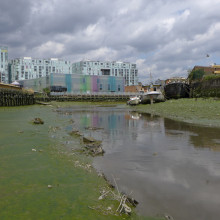
27:41 - Brownfield sites: conservation havens
Brownfield sites: conservation havens
with Nick Bertrand, Creekside Discovery Centre
Clearly we should be encouraging nature in our cities but where's the best 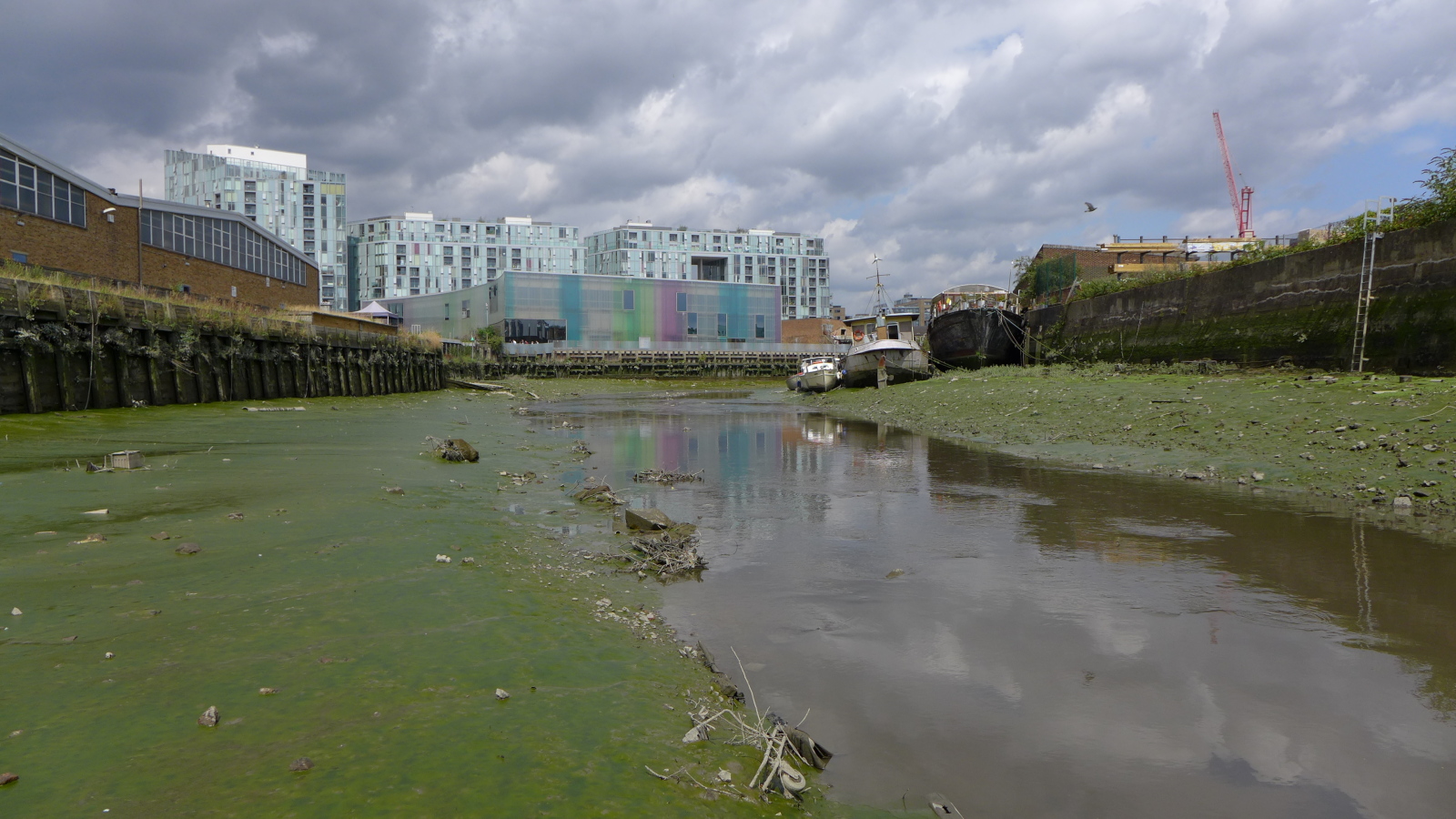 place for it? Parks, gardens or maybe just an old demolition site? The Creekside Discovery Centre sits on a purpose built brownfield site in South London. The term brownfield site refers to an area that have been previously developed and as the centre's tour guide Nick Bertrand suggested to Connie Orbach, they're a little underappreciated...
place for it? Parks, gardens or maybe just an old demolition site? The Creekside Discovery Centre sits on a purpose built brownfield site in South London. The term brownfield site refers to an area that have been previously developed and as the centre's tour guide Nick Bertrand suggested to Connie Orbach, they're a little underappreciated...
Nick - The terrible thing is that what we call green fields in the countryside have mostly been utterly devastated by industrial agriculture and are extremely poor for wildlife. Previously developed land, which then gets abandoned and then goes completely wild, can be some of the most diverse areas we have, but they all got castigated under this evil label.
Connie - On that note, I thought it was best to go see a brownfield site for myself. But I just needed a couple of things first.
Nick - So, you need the same size.
Connie - I've got big feet.
Nick - You've got big feet? What size?
Connie - Yes, size 9.
Nick - Size 9, get you. So there's size 9. Say, size 9 waders for size 9 feet.
Connie - Fantastic! I'll find the men's waders). Yes, that's right, huge thigh-high rubber waders. You may have seen something similar on fishermen.
Okay, I feel like a bit of an idiot.
Nick - That's fine. We've got loads of idiots now.
Connie - All booted up, we were ready to go. Creekside is on a tiny wedge of land on the bank of wildflowers leading down to the river, a rare sight in a part of London that as you may be able to hear, is undergoing huge amounts of redevelopment.
Nick - We have cranes in the left and cranes to the right, so there's cranes ahead of us and we're going into the valley of the creek.
Connie - Great! Let's go.
Nick - As we come over the brow of slope here, we're moving down from dry land into wetland and you can see the white flowers just ahead and they're the flowers of Hemlock Water Dropwort which tell you you are moving into the wetland zone.
Connie - And it gets a bit less pretty down the bottom. You start to see the sludge.
Nick - Yeah, it is a sludge but don't forget where you are now. If you were standing here 6 hours from now, you'd be underwater. So up there where all the white flowers are, that's the shallow water. And then when you're moving into the deeper area where the tide is really going to be covering it by more than a meter or so, the vegetation, there's very few plants that can cope with that.
Connie - We began to wonder into the river itself, a high for biodiversity with fish, frogs, crabs, and well, an awful lot of rubbish really. I couldn't help wondering if the animals might be a bit happier in a river free from shopping trolleys and old mattresses.
Nick - Here now, probably not. I mean, the river itself is clean. Everybody wants to do the creek when they first see it is clean it up and tidy it up, and pull everything out. That can actually be detrimental to the wildlife here. The river is about one-third as wide as it was originally and there are no natural banks. So, the only natural bank, which is artificial, in the creek is our beach down into it which we created. Because a creek is a very specialised environment anyway, there's lots of things the wildlife has to be able to cope with. Actually, some of the rubbish in the creek actually helps it do that. So, Jill Goddard who was running the project to do with the creek in the '90s. She organised a clean-up at the top end of the creek. On one weekend, over 400 shopping trolleys were removed. A couple of weeks after the clean-up, the number of young fish in the creek had halved.
Connie - Wow! Just a couple of weeks after?
Nick - Yes, so that immediately got everybody thinking that the one thing that happened that changed in that period was the removal of the shopping trolleys. Because we've got no natural river banks, these are places young fish go in to hide in amongst when the tide comes in. as you can see, at low tide here, there's no big bad fish. As soon as the tide comes in, so do the big bad fish. So, the little fish need to get out of the way. What they do is they go into the vegetation sites. They can't do that here because there isn't the vegetation. What they have got is shopping trolley. So, shopping trolleys accumulate debris. There's only one side. Anything can get into a shopping trolley, so they're a perfect little refuge. They provide a niche for not just fish but all sorts of other invertebrates and other things too. But we're not trying to encourage people to chuck things into the river. We're just trying to work with what we've got here to make the best of it which is what the wildlife does as well.
Connie - From what I can tell in housing arguments, everyone is saying, "build on the brownfield sites, retain the greenbelt outside, stop up in sprawl" but is that necessarily the best way to go for conservation?
Nick - Well, it's disastrous for everywhere around here. Trouble is, people are using these terms as if they're all meaning - well, all greenbelt is good. Therefore, preserved and all, but it varies enormously. So, some of the greenbelt is of fantastic wildlife value, some of it is not. Why can't we have a rational approach to pieces of land? So, this piece of land is important for farming, historically, for wildlife or whatever. Let's keep it. That piece of land isn't. Unfortunately, the whole development process is completely piecemeal. What really happened in London has been completely ignored actually because of that lack of contextual approach to looking at what's happening to the environment. So, we've lost an awful lot of habitat in London in the 30 years I've been involved.
Connie - People don't want to live by sites like this that much I guess...
Nick - I don't know the answer because comes down to aesthetics. It's easier to train ourselves change our aesthetics than it is to change what wildlife does. I have no idea how you can change what wildlife does, but we can change how we look at things and how we approach things. But unfortunately, really what it all comes down to is money. So, these pieces of land that may be hugely valuable for wildlife are hugely valuable to people too, so they're worth millions of pounds. The trouble with wildlife - let's face it - is they're just bunch free loaders. They don't pay rent, they don't pay taxes.
Connie - They don't give anything back.
Nick - They're absolutely hopeless. They'll never say thank you. So, what can you do for them?
Connie - So it's an ethos.
Nick - It's been impossible to crack. I have no idea. So, the whole system gives the appearance of taking all of these things into account but a lot of it is really green wash. It really is.
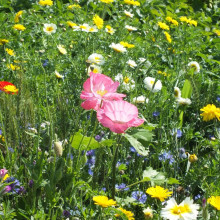
35:20 - Where's the money in biodiversity?
Where's the money in biodiversity?
with Dr Mark Goddard, Newcastle University
If brownfield sites are such wonderful havens for wildlife but also huge commercial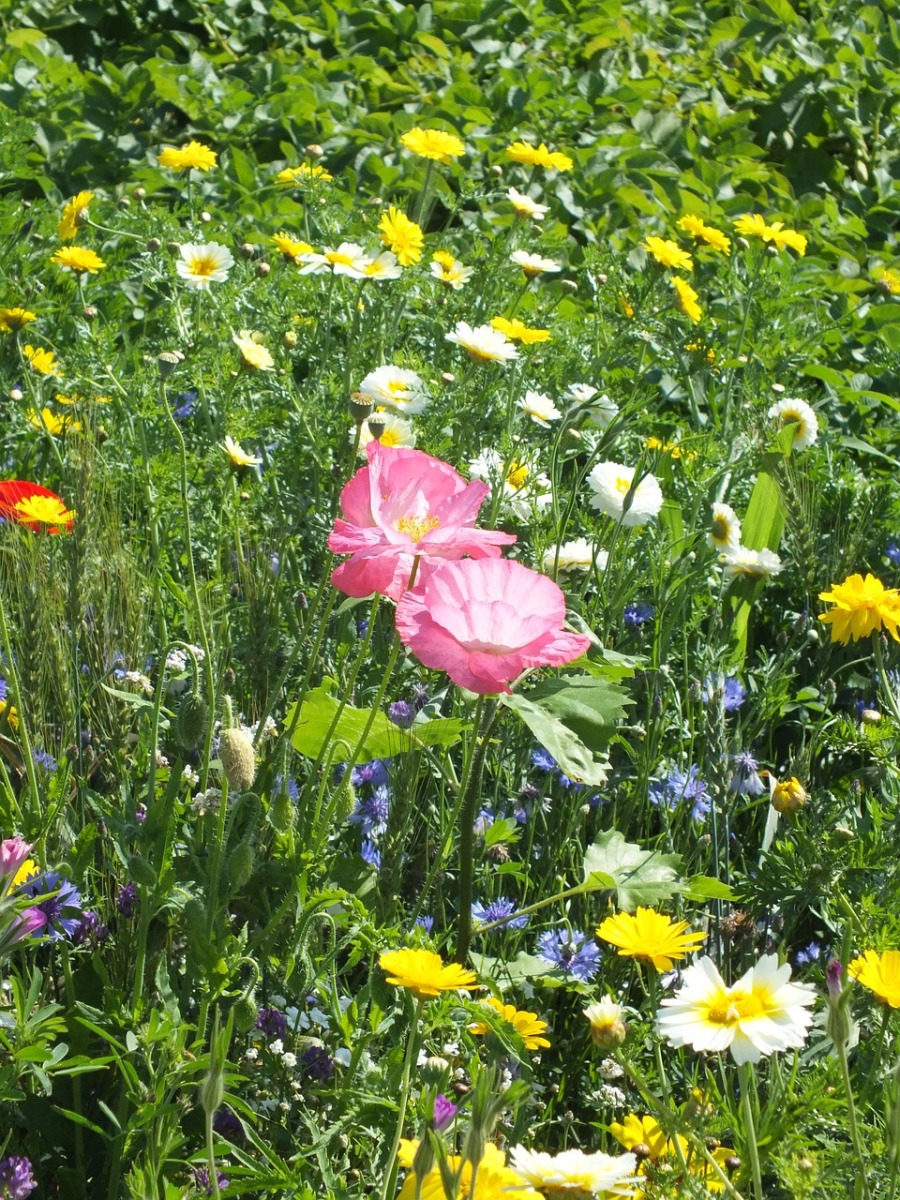 assets for development then how do we make the equation add up? Well one way is through something called ecosystem services, Mark Goddard gave Kat the lowdown...
assets for development then how do we make the equation add up? Well one way is through something called ecosystem services, Mark Goddard gave Kat the lowdown...
Mark - It's certainly one possible solution. So, ecosystem services is basically about the benefits that people obtain from nature. So, it's about putting a value on nature. Think about the provision of food or clean water for example as an obvious way. It fften involves monetising nature as well. So as an example, insect pollinators contribute in excess of 600 million pounds per year to the UK economy in terms of the crops they pollinate.
Kat - They're certainly busy little bees, are they?
Mark - Absolutely.
Kat - And so, how do we actually get this to work? Are there any examples where this has been shown to be effective that we've got a site like this and we said, "Actually, it's worth this and it can do this for us."
Mark - Yes. I'm actually working on a project right now which is called the Success Project. It's looking at the value of urban soils for capturing carbon which is another very important ecosystem service in terms of mitigating the negative effects of climate change. As an example, there's a large brownfield site in the city centre of Newcastle and it's been shown that the urban soils there actually capture around about 85 tons of atmospheric CO2 per hectare per year. So it's a huge amount of CO2 that's been sequestered by this land. The project I'm working on now is looking at, can we actually understand how land design to capture carbon can also provide other ecosystem services as well such as supporting biodiversity.
Kat - That's where the economics does start to add up because I think under some of the climate change regulations and things like that, countries can now be fined if they're not making efforts to reduce their carbon emissions, try and capture carbon. So, if you can put a value on this, this suddenly starts to look more promising, doesn't it?
Mark - Yeah, certainly. It is a possible solution. As a caveat, I must say that many ecologists are a little bit concerned about putting a monetary value on biodiversity for example. It sometimes could be off giving almost a license for its destruction or a price on its destruction. It doesn't always work but it certainly is something that appeals widely to policymakers.
Kat - And ultimately, is that the bottom line that you have to put a value on things to get them in the policy agenda?
Mark - Difficult question and again, many scientists are divided about this. But certainly, with the pollination example, if you can say that insect pollinators are worth this much to the economy, policymakers can pick up on it. they pick up on the figures so it's certainly one tool for putting a value on nature.
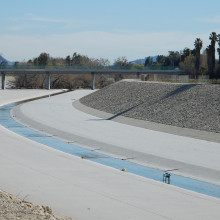
38:40 - Future thinking conservation
Future thinking conservation
with Peter Kareiva, UCLA Institute of the Environment and Sustainability
It seems that our cities have a surprisingly large capacity for wildlife but, in order 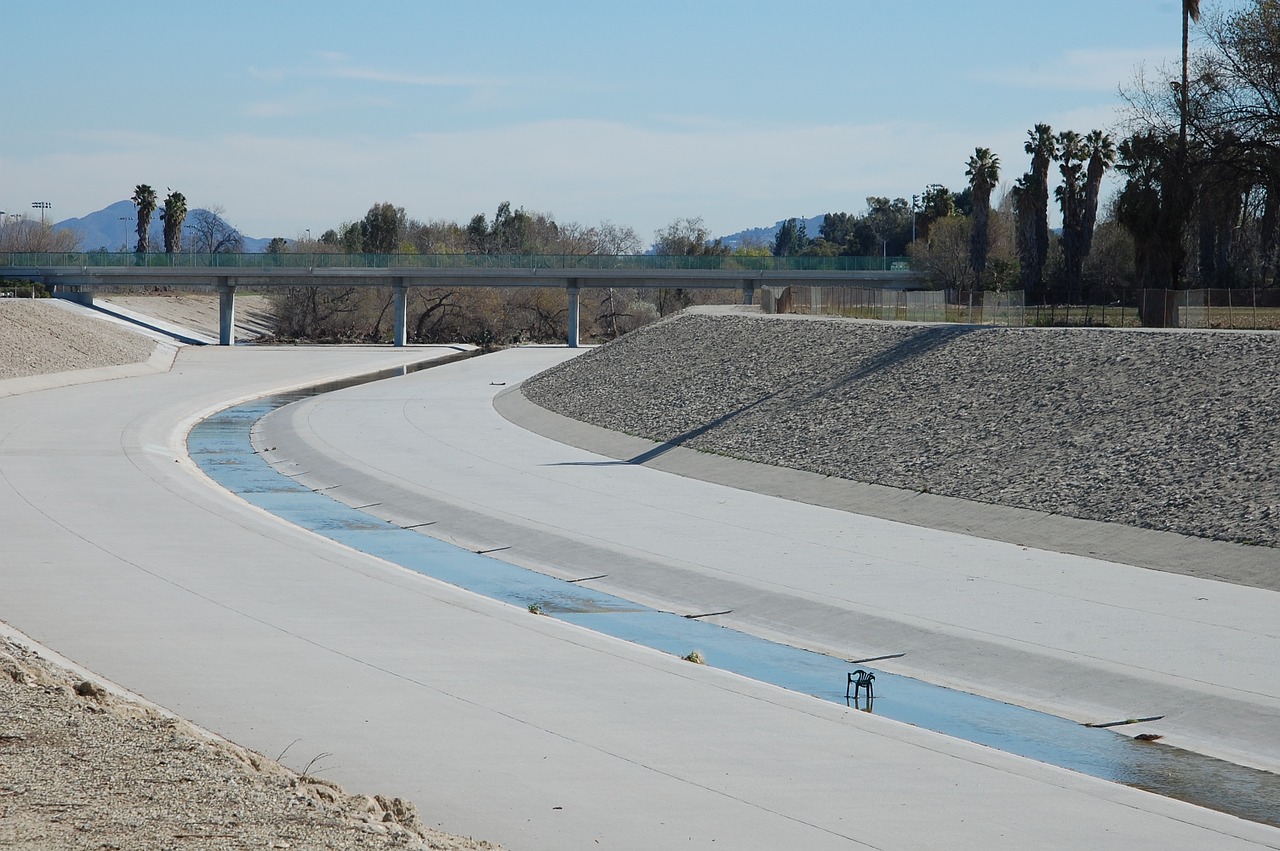 to protect this wildlife we may need to work out how it can make a profit. But does this all seem a little cynical? Connie Orbach asked UCLA's Director of the Institute of the Environment and Sustainability Peter Kareiva if the problem is that we just don't value nature enough...
to protect this wildlife we may need to work out how it can make a profit. But does this all seem a little cynical? Connie Orbach asked UCLA's Director of the Institute of the Environment and Sustainability Peter Kareiva if the problem is that we just don't value nature enough...
Peter - People do value nature. Nature is our habitat, so I don't see the absence of value at all and I don't see it in political action. Cities all around the world are investing heavily in putting nature back into them. Nature is a form of wealth. I think the way to speak about nature in cities is inequity and inequality. Everybody around the seems to be having a conversation about the unfairness of a small elite class having access to so much wealth. Well, access to nature is a form of wealth. Sometimes I think in the conservation movement, we forget that. We do conservation in wonderful places around the world - in Africa, Mongolia, Patagonia. We sit around and tell stories about spectacular landscapes and places we see. We're the upper one per cent there in terms of access to nature. We have to think about equality of access to nature in cities and when we frame it that way, states and countries and cities are increasingly willing to pay to give their people access to nature in their cities.
Connie - It's one thing to look at that from a westernised society where we have gone through that stage of change and only now, we're talking about putting more effort back in. is there something we can do at those earlier stages in poorer parts of the world before we get to that point?
Peter - You're exactly right. Most of our examples of spectacular examples of urban conservation are in places like San Francisco, are in places like Los Angeles where there's a fair bit of affluence and that affluence is what makes it possible. The more challenging question is these newly emerging, they're much smaller cities initially, in Africa would be a good example. Can we have those cities develop so that there's still nature in them? I think there's two ways in which that is really feasible. One is: land is cheap in those cities. So it's not the huge expense. As there's a sprawl, pay attention to the water waste and pay attention to remaining fragments of forests and natural habitat. In those cities, it's not expensive. It's more a matter of political will and planning. It's not an expensive endeavour. It's an expensive endeavour in Los Angeles, but Los Angeles has the money. I've taught ecology for 40 years. It's cross cultural. Kids feel awe and wonder when they see nature, when they see a fox, when they see neat birds, and something beyond ourselves or beyond our species. Awe and wonder for nature is not a western concept. It's a human concept.
Connie - Is that quite a different way of looking at conservation or is that the way that everyone is looking at conservation, looking at what we can do for people as opposed to looking at the planet, and thinking of ourselves maybe a bit of as a blight on that planet?
Peter - I think conservationists have always recognised that they have to work with people. In other words, human behaviour is part of conservation. I think the slight shift is the recognition that speaking of people as a blight upon the planet is not very inspiring. There's an undercurrent of the good old days and I think we all feel the good old days. I have nostalgia myself for a world less crowded. There are certain places I like to hike and when I go there, there's more people on the trails and I wish there weren't. But that's not a foundation for political action. So I think a way to sort of reframe conservation is instead of it being just about what we've lost, we should be nature futurists. We should be imagining the best possible future for nature, and for species, and for biodiversity. When we do that imagining, we can't constrain our thinking into saying that the only way to get that best possible future is to return to the way it was in the past because if we went that pathway, it would cost us way too much money. It would be disruptive. We would never get there. So, if we free ourselves from having only a picture of the past when we think about the future for nature, I think we could be much more creative and have a much better future. Does it make any sense?
Connie - Yeah. What I get from that is as a species, we have moved the world on too far really to go back, haven't we?
Peter - Yes, we have. That might sadden us but we got to get over it.
Connie - We've got to move forward. And so, this is the kind of thing you're working on, right?
Peter - One of the reasons I moved to Los Angeles - it's a mega city of the world. It's viewed almost as a dystopian city. Yet, it's a biodiversity hotspot. There is an increasing awareness and appreciation for nature here. If you go to action movies, you've seen the Los Angeles river. It's the concrete river where they're always doing the Terminator films and the car chases. There's a billion plus project underway to restore that river. All the fish in the Los Angeles river now are non-native. It's been so modified. It's got carp and bass, and tilapia. On the other hand, there's a lot of really spectacular native birds. They have egrets, great blue heron, osprey. Now as we think about what we're going to do with that Los Angeles river, I might argue, those non-native fish may not be what we wanted, but the birds don't care, so maybe we should take delight in restoring the Los Angeles river, accepting the non-native fish, but encouraging and taking marvel in the native birds and the spectacular birds that everybody can see. So that's an example of thinking about conservation in a way that's future oriented, that really has something for people in it, and that really has something for biodiversity in it as well.
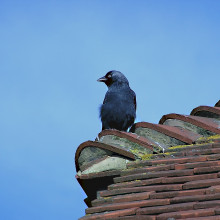
45:09 - Adapt or die
Adapt or die
with Professor Philp James, The University of Salford
We've been hearing about what we can do to protect biodiversity in an increasingly urbanised world but what can wildlife, and specifically animals, do for themselves? Professor Philip James is an ecologist from the University of Salford and he joined Kat Arney...
Philip - Well cities in general, they differ from the rural areas in a number of ways. Compared to rural areas, urban areas which are - we can think of as being landscapes dominated by concrete, brick, tarmac. They're usually warmer. They're usually full of more artificial noise. They have artificial lighting regimes, more chemical pollution, and they have relatively little vegetation. And what vegetation is there is often quite exotic. Furthermore, cities have different suites of parasites and predators. And the food that the wildlife can gain tends to be richer in fats and proteins. So, all of these things come together to cause stress within the wildlife and you can see that in some of the physiological stress signs looking at blood composition for example in their stress hormones. It also means that there tends to be a selection towards certain types of animals - omnivores and frugivores (the fruit eaters) rather than insectivores and carnivores.
Kat - So, what are the options for animals when say, the landscape that they've been living in then suddenly a load of houses are plonked on it? What can they do?
Philip - Well in general terms, they have three options. They can either run away, they can adapt, or they can die. An animal which is able to move could walk or could fly. It could do that to get to a nearby habitat which is still providing what it needs in terms of food and somewhere to breed, somewhere to nest. But if an animal is not able to move for whatever reason, then it would eventually die out as a result of starvation or through some other cause - disease, poison, predation, unless it is able to adapt.
Kat - What are some examples of animals adapting? Obviously, I don't really want to think about them dying. What are the changes that happen?
Philip - Well, it's generally covered by an idea called plastic behaviour. Plastic behaviour is this idea that within a life cycle of a lifetime of any individual species, it can change something about its behaviour. It might be the way that it responds to artificial light or the way that it responds to sound.
Kat - Are there any particular examples of this happening?
Philip - If we think about birds and what they tend to do, if they're living in an urban environment, we tend to find that their song changes in one of three ways. They either sing louder and that is actually the most common thing that they do, or they change the frequency of their song. Typically, the notes, the sound of an urban area are fairly low pitched. And so, a bird can raise its tone up of that low pitch or it can change the time that it sings, the time of day, might sign earlier or later when it's quieter. If we think about the grey tit which is a common urban bird, it's been shown they've been noisy compared to quiet conditions, the grey tit song is shorter, faster, and at a higher pitch.
Kat - We are urbanising at quite an incredible pace. Certainly in London, I see more and more blocks coming up, there's more and more developments I know in the Cambridgeshire area, and many, many other places across the UK. Can animals actually keep up with this? Can they adapt at a fast enough speed?
Philip - Well, some can and some can't. Those that have got this plastic behaviour ability, those that change their behaviour rapidly enough, these are the ones that are able to survive within the urban areas. It might be that they change their food source. It might be that they change when they do things the time of day that they're active. It might be, as I've already described with the grey tit, the way that they sing. These changes in plastic behaviour can occur very, very quickly and they can change more than once within the lifetime of an individual bird or an individual mammal for that matter. So go back to the idea of the grey tit. It could adapt the way that it sings because of a particular environmental issue that it's coping with today. If that changed tomorrow, it would start to make that change, it would start to adapt again.
Kat - And very, very briefly in one sentence, does this mean that they're kind of going to be okay and we don't need to worry about the animals?
Philip - The ones that are able to adapt, they're going to be okay. What we find is that across the world, the fauna and flora of cities tends to becoming more the same. It's the species that you find in cities are more like those in another city that they are in the countryside, around those cities.
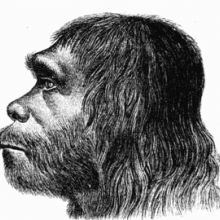
50:10 - When did people start using names?
When did people start using names?
It's time for Question of the Week and this week Lucka Bibic has been looking back in time with this question...
Kat: - Hey, scientists. This is Kat from Kansas City, Missouri. I was reading a Gary Larson comics the other day and noticed all the cavemen had silly names, and it got me wondering, did cavemen even have names? When did human beings start naming themselves?
Lucka - We asked you what you thought on Facebook. Alejandro wrote.
Alejandro - Did you suppose the first name was an insult? Lucka - And Andrew thinks.
Andrew - I think early humans were given name to their young out of affection rather than necessarily like we do today.
Lucka - To get to the bottom of this caveman mystery, I enlisted the help of linguist Professor Shigaru Miyagawa, from MIT. But first what do we mean by cavemen?
Shigaru - The thing to keep in mind is that the idea of cavemen is for the most part fiction that was created by popular culture. It's based on things that appear to be real. A lot of things have discovered in caves like paintings and artefacts with symbols. But the image of them hunting alongside dinosaurs for example is a romantic fiction of evolution.
Lucka - Got you. So, let's step away from the caveman like Fred Flintstone and look instead at our own species, homo sapiens. How did we first start to communicate with each other?
Shigaru - I think a lot of theories actually you could imagine. One theory says that communicated in single words just like monkeys. Some monkeys have a single word system like snake, leopard, and eagle to let the others know that a predator, like a leopard, is nearby. Another theory which is by Charles Darwin says that pre-humans communicated by singing just like birds. He observed that bird song is the nearest in origin to human language. And birds sing to attract mates. So maybe our ancestors communicated this desire to mate by singing. Which of these is true, a single word system or singing? Well, we don't really know because language doesn't fossilise. Actually, what I think is that both were probably true. Our ancestors communicated in words to warn others of a prey in the vicinity and singing to attract mate.
Lucka - This singing could have been an early framework for things like grammar and the early start of language. But back to the original question, when did names come along?
Shigaru - Human language appeared only recently. Some say about 100,000 years ago. That was around the time that Homo sapiens were migrating out of east Africa into the Eurasian continent. They were hunter-gatherers. Once farming became possible, around 10,000, maybe 12,000 years ago, you had more fixed roles in a larger community of people. So, you had to come up with a way to distinguish individuals. That's when you started to assign names. Certainly, the origin of human language in evolution is one of the great mysteries of science.
Lucka - The best we can do without a time machine. Thanks, Shigaro. Next week, we will be scanning the horizon to answer Loot's question.
Loot - How did the moon get its markings?









Comments
Add a comment